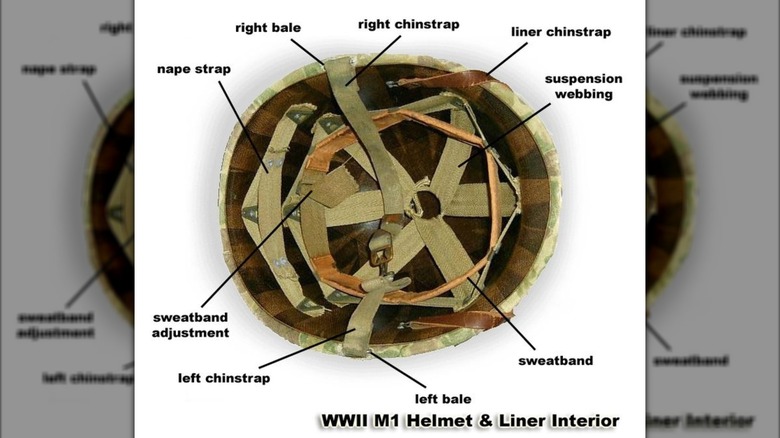Why Weren't WW2 Combat Helmets Bulletproof?
War has been part and parcel of humanity since the proverbial beginning of time, and people have clad themselves in protective gear and armor for thousands of years. Helmets worn in combat are not a new invention, but modern warfare has changed their composition and purpose throughout the course of history. Very early helmets were made from cloth and leather to protect against swords and arrows, but that quickly changed once metal was employed. Believe it or not, helmets reinforced with metal were used by the Sumerians and Akkadians as far back as 2300 B.C.E., and Mycenaean Greeks used bronze helmets (typically quite heavy) in 1700 B.C.E.
The combat helmet we know today didn't come of age until World War I, when artillery and timed air bursts rained shrapnel down on soldiers. As the story goes, August-Louis Adrian, a French Intendant-General, spoke with a wounded soldier who claimed a mess bowl he was wearing under his cap saved him from falling shrapnel. Adrian went to work and created a 0.5mm-thick skull cap made from Bessemer steel. Between December 1914 and February 1915, over 200,000 such helmets were supplied to soldiers.
But even the M1 "steel pot" helmet made from manganese issued in 1942 for WWII (and remained in service until the mid-1980s) wasn't meant to be bulletproof. Its primary goal was to deflect overhead shell fragments. At the time, there simply wasn't a material or compound that could effectively make a helmet bulletproof without it being too heavy or cumbersome. Remember, Kevlar, the strong, heat-resistant, synthetic fiber that's since become interchangeable with the word bulletproof wasn't created by DuPont until the 1960s.
Helmet design changed with the times
For centuries, helmet and protective armor design was driven to offer protection from rudimentary hand-held weapons (i.e., swords and arrows). However, once firearms came onto the scene in the late 1700s, what had once been adequate protection quickly became obsolete. In fact, protective equipment became an afterthought because the prevailing theory was that protecting soldiers from bullets wasn't possible. Armies stopped requiring that most troops wear any helmets, instead reserving them for certain units (like cavalry) and special occasions.
After the "Adrian" helmet was created, the design and development of combat-effective headgear took off. In 1916, the Germans made stahlhelms from chromium-nickel alloy while the British fashioned Hadfield steel British Mk. I "Brodie" helmets (weighing about 1.3 pounds) for its soldiers. U.S. troops were initially given the same helmets used by the British until their own version — the stamped steel M1917 with its rounded crown and flared brim — was issued. This helmet was not bulletproof and meant mainly to deflect shell fragments.
During WWII, soldiers were issued the 3.5-pound M1 helmet made from manganese steel. While it offered greater protection against the ever-increasing ballistic lethality of bullets and shrapnel with much higher velocities, soldiers said it interfered with sights and sounds around them as well as their mobility. The heavy helmets were never designed to protect from small-arms fire. Despite the limitations, more than 22 million M1 helmets were made during the war. Despite all of the advances, even today's high-tech, lightweight military-grade ballistic helmets aren't bulletproof.

